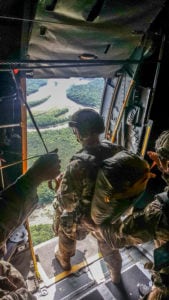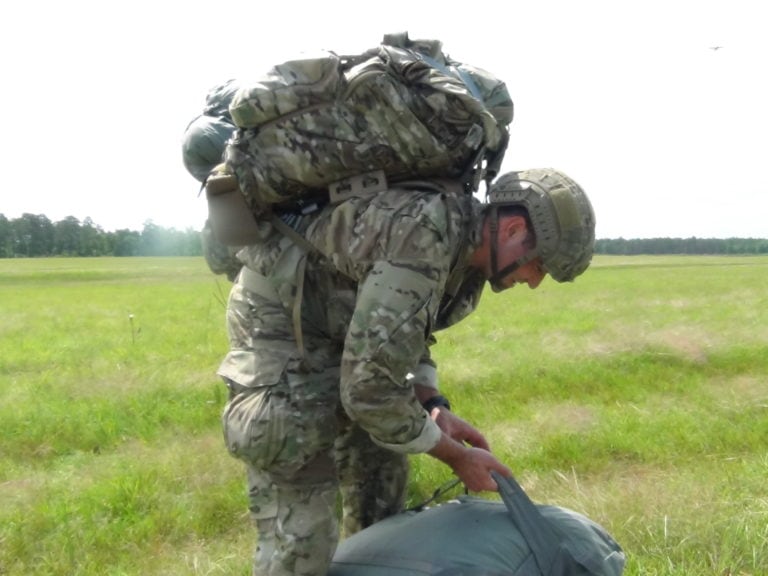Airborne Rangers recently tested a civilian company-made rucksack on parachute jumps at Fort Benning, Georgia.
The 3rd Battalion, 75th Ranger Regiment members jumped from Air Force C-130 Hercules aircraft with three variations of the ruck, provided by the company Mystery Ranch, according to an Army release.
Those variations included the Assault Pack, Patrol Pack and Recce Pack. That’s in order of size. The assault version has 3,200 cubic inches of space while the recce version has the most room with 6,200 cubic inches.
RELATED

Neither the release nor the Mystery Ranch website provided details of the size of the patrol pack.
Forty-seven soldiers from the Regiment conducted 45 static line infiltration jumps at the Fryar Drop Zone.

The new ruck testing is an effort to give soldiers more modularity and support a variety of missions that the legacy All-purpose Lightweight Individual Carry Equipment, or ALICE pack, does not, said Lt. Col. Dave Dykema with the Army’s Operation Test Command Airborne and Special Operations Test Directorate out of Fort Bragg, North Carolina.
“These rucksacks provide a modern load carrying solution that can now be certified for static line airborne operations,” said Staff Sgt. Jake Leveille, 75th Regimental Air NCO.
Mystery Ranch’s website shows a menu of at least four “jump” variations of their backpacks, which range in price from about $500 to more than $800. The company makes both military and civilian gear, much of which is aimed at the outdoor and hunting communities.
Though decades went by in past generations with little change in the backpack or rucksack gear world, in recent years both the Army and Marines have been updating backpack technology for better load bearing and comfort.

And it’s no simple science.
In 2018, paratroopers with the 82nd Airborne Division began fielding a reported 6,000 new rucksacks designed specifically for airborne operations. The rucks borrowed from both the ALICE and Modular Lightweight Load-carrying Equipment system that replaced many of the legacy ALICE systems in the Army and Marine Corps in the early 2000s.
The new airborne-specific ruck, the MOLLE 4000, is a mid-sized ruck, built for parachute jumps. It has a larger top flap, larger leg storage pockets, an internal radio/equipment pocket, a flap closer on top, side compression straps, a stronger carrying strap and a longer back pad.
That design fell in the middle of the existing MOLLE 3000 and MOLLE 5000, whose numbers designate the cubic inches each ruck can hold.
As recently as 2017, Marines on exercises in Norway were reporting pack frame cracking and breaking of their standard issue Family of Improved Load Bearing Equipment, or FILBE, frames due to the intense cold and winter climes, Marine Corps Times reported.
Those frames were first issued to Marines in 2011, and Marines and larger-scale reporting of problems surfaced in 2014, resulting in reinforcements to the frames.
Todd South has written about crime, courts, government and the military for multiple publications since 2004 and was named a 2014 Pulitzer finalist for a co-written project on witness intimidation. Todd is a Marine veteran of the Iraq War.





